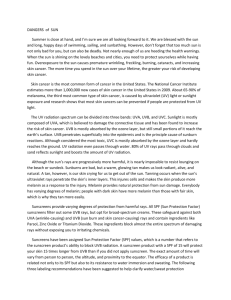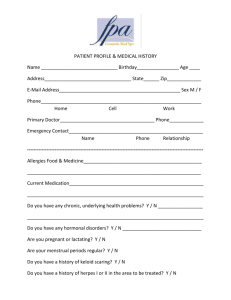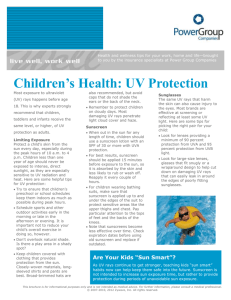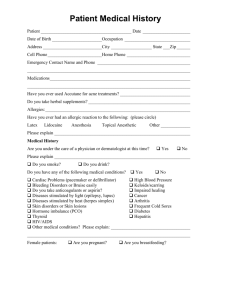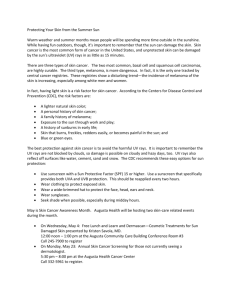intervention strategy - Weld RE
advertisement
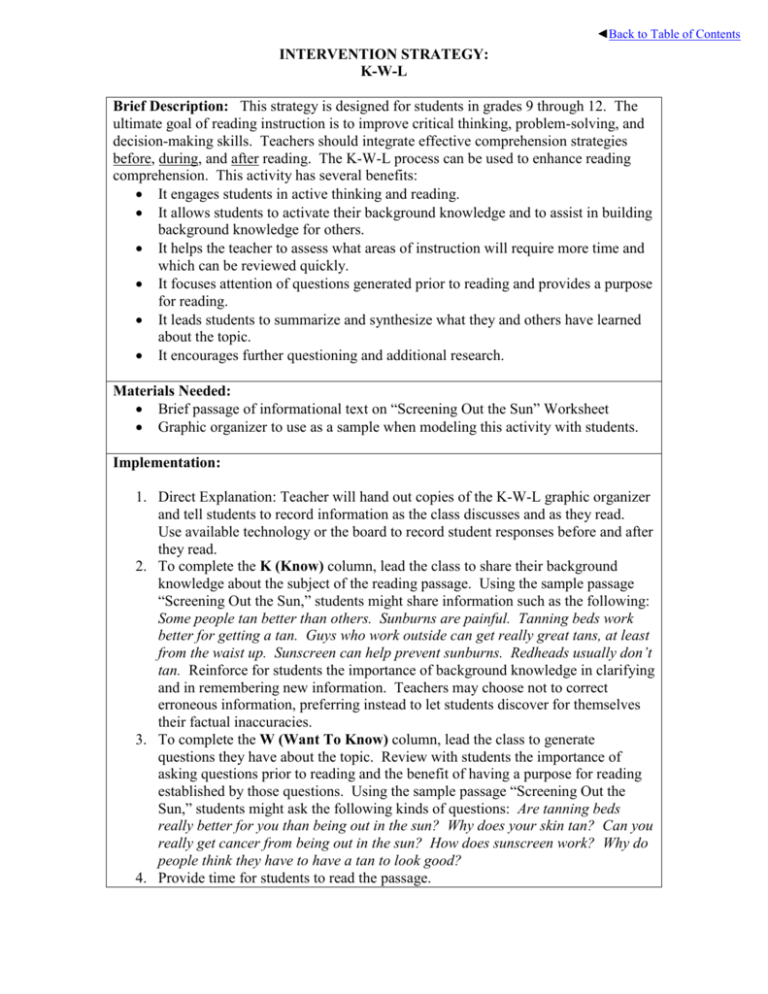
◄Back to Table of Contents INTERVENTION STRATEGY: K-W-L Brief Description: This strategy is designed for students in grades 9 through 12. The ultimate goal of reading instruction is to improve critical thinking, problem-solving, and decision-making skills. Teachers should integrate effective comprehension strategies before, during, and after reading. The K-W-L process can be used to enhance reading comprehension. This activity has several benefits: It engages students in active thinking and reading. It allows students to activate their background knowledge and to assist in building background knowledge for others. It helps the teacher to assess what areas of instruction will require more time and which can be reviewed quickly. It focuses attention of questions generated prior to reading and provides a purpose for reading. It leads students to summarize and synthesize what they and others have learned about the topic. It encourages further questioning and additional research. Materials Needed: Brief passage of informational text on “Screening Out the Sun” Worksheet Graphic organizer to use as a sample when modeling this activity with students. Implementation: 1. Direct Explanation: Teacher will hand out copies of the K-W-L graphic organizer and tell students to record information as the class discusses and as they read. Use available technology or the board to record student responses before and after they read. 2. To complete the K (Know) column, lead the class to share their background knowledge about the subject of the reading passage. Using the sample passage “Screening Out the Sun,” students might share information such as the following: Some people tan better than others. Sunburns are painful. Tanning beds work better for getting a tan. Guys who work outside can get really great tans, at least from the waist up. Sunscreen can help prevent sunburns. Redheads usually don’t tan. Reinforce for students the importance of background knowledge in clarifying and in remembering new information. Teachers may choose not to correct erroneous information, preferring instead to let students discover for themselves their factual inaccuracies. 3. To complete the W (Want To Know) column, lead the class to generate questions they have about the topic. Review with students the importance of asking questions prior to reading and the benefit of having a purpose for reading established by those questions. Using the sample passage “Screening Out the Sun,” students might ask the following kinds of questions: Are tanning beds really better for you than being out in the sun? Why does your skin tan? Can you really get cancer from being out in the sun? How does sunscreen work? Why do people think they have to have a tan to look good? 4. Provide time for students to read the passage. 5. To complete the L (Learned) column, allow students to share important concepts from their reading. Lead the class to note any factual inaccuracies from the K column and supply any significant information that is missing after students respond. 6. Lead students to determine if all of their questions have been answered. If not, discuss where to look for this information. The class may also want to generate additional questions arising from their reading. Schedule for implementation: This strategy can be implemented individually or in small groups. It can be facilitated by a teacher, paraprofessional or adult volunteer. Many of these activities are designed as mini-lessons requiring five to ten minutes. References: Arkansas Department of Education (2006) Smart Step/Next Step Strategies for the Content Areas. Tool/Attachments: KWL Worksheet Graphic Organizer Worksheet #1 SCREENING OUT THE SUN Summer's on its way, but beware, while you're preparing to catch all the rays you can, the sun is gearing up for another scorcher. That's right, all your fun in the sun could easily turn into a nightmare for your skin. But it doesn't have to. Here's the latest news on sun-related health, as well as the ins and outs of the best sunscreens and tanners on the market, so you can enjoy a worry-free summer. Q: What is SPF? A: SPF (Sun Protection Factor) is a way of measuring the ability of sun protection products to filter or block the damaging UVB rays of the sun. It is the time that you can safely spend in the sun without burning while wearing sunscreen. For example, if you burn in five minutes without any protection, using an SPF 30 will allow you to sit in the sun 30 times longer or 150 minutes (2 1/2 hrs) before burning. Q: Is it necessary to wear sunscreen everyday? A: Yes. "A suntan is a sign of damaged skin," says Shail Busbey, M.D., assistant professor of clinical medicine, who specializes in skin problems at the University of Chicago Hospital. You get a suntan when UV radiation causes certain skin cells to produce more melanin, a pigment that protects underlying tissues. Too much sun over a long period of time is the foremost cause of aging in the skin. Q: What are UVA and UVB rays? A: UVB rays are the "burning rays" which are more intense during the summer months, at higher altitudes and closer to the equator. UVA rays are the "aging rays" and maintain the same intensity throughout the year, both types of rays are associated with the development of skin cancers. However, more recent research has shown UVA rays, the invisible rays that aren't blocked by windowpanes, to be the primary culprit in cancer related skin damage. Q: What SPF should I use to protect myself against these harmful rays? A: The American Academy of Dermatology lists the following five skin types. Type I: (extremely sensitive) always burns, never tans Type II: (very sensitive) burns easily, tans minimally Type III: (sensitive) burns moderately, tans gradually to a light brown Type IV: (minimally sensitive) burns rarely, tans well to a dark brown Type V: (not sensitive) never burns Dermatologists recommend sunscreens with a minimum SPF of 15 for all skin types. The fairer your skin or the longer your exposure to the sun, the higher the SPF required. Q: Are tanning beds dangerous? A: There is no such thing as a safe tan. Tanning lamps use ultraviolet (UV) light, similar to the UVA and UVB rays of sunlight. Tanning salons can lead to a variety of risks such as skin cancer, eye damage (even if your eyes are closed), skin damage, and a weakened immune system. Since UV radiation is intensified with tanning devices, even a short session is equal, in effect, to lying on the beach for hours. Q: What about sunless tanners? A: Sunless tanners are formulated to provide a natural looking "tan" that's not orange or streaky. The color of sunless tanners is produced when the ingredient DHA combines with certain natural amino acids found in the skin. The amount of color you'll develop depends on the shade of the product used, the number of times it's applied, and your own body chemistry. After application, color should develop in two to four hours, last several days, and fade like a natural tan. Because there is no sun involved, sunless tanners are relatively safe. The fewer chemicals, the better the product is for you skin and the less chance you'll have of an allergic reaction. Q: What sunscreen brands do you recommend? A: There are thousands of brands on the market and many of them have similar ingredients. No matter what brand you choose to buy, you should make sure of three things: 1) It is dermatologist recommended. 2) It offers broad spectrum, waterproof coverage with protection from both UVB and UVA rays. 3) It has an SPF of at least 15 and no more than 30. The FDA no longer approves sunblocks with SPF's over 30, because they are believed to encourage people to stay out in the sun for unhealthy periods of time. Two of the most highly respected brands on the market are PreSun and Neutrogena. Both are Dermatologist recommended. PreSun is formulated with Parsol 1789, a recently approved ingredient that provides broad-spectrum coverage. You can find PreSun at just about any drug store in spray, gel, block or cream for around $8 a bottle. Neutrogena is great because it offers a line of non-greasy, oil-free, non-comedogenic [comedogenic: aggravates or produces acne] sunscreens and blocks. They also have a line of fragrance-free, PABA-free lotions with sunscreen, that are waterproof and nongreasy, so they won't clog pores. Also, Neutrogena's Sunless Tanner is one of the best on the market. Neutrogena products are more expensive than PreSun, ranging in price from $10- $20 per bottle, and can be found at your local drugstore as well as just about any department store in the mall. Banana Boat is a very popular brand that doesn't come as highly recommended, but offers one of the most inclusive arrays of suncare products on the market. Banana Boat has more sprays, gels, oils, screens, blocks, lip balms, and ointments than can be mentioned. Their products are trustworthy and can be found at drug and grocery stores, ranging in price from $6-$15 a bottle. Beware of their SPF 0 tanning oil; it offers no protection from the sun's harmful rays. Now that you're a little wiser to the sun's relationship with your skin, have a great summer and be good to your body, it's the only one you've got. Graphic Organizer “Screening Out the Sun” K W L What do you KNOW What do you WANT What have you about this topic? TO KNOW about this topic? LEARNED about this topic?
